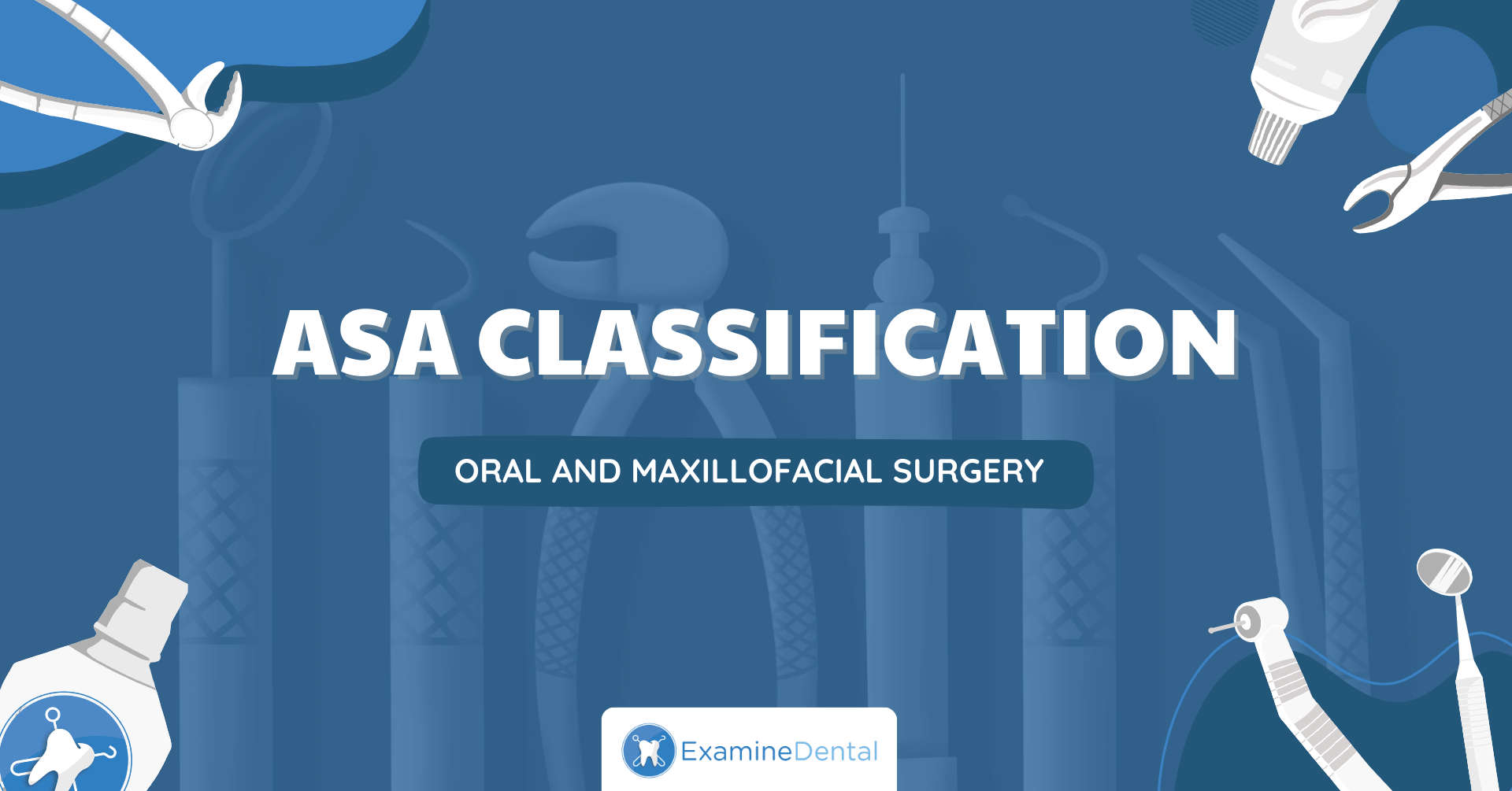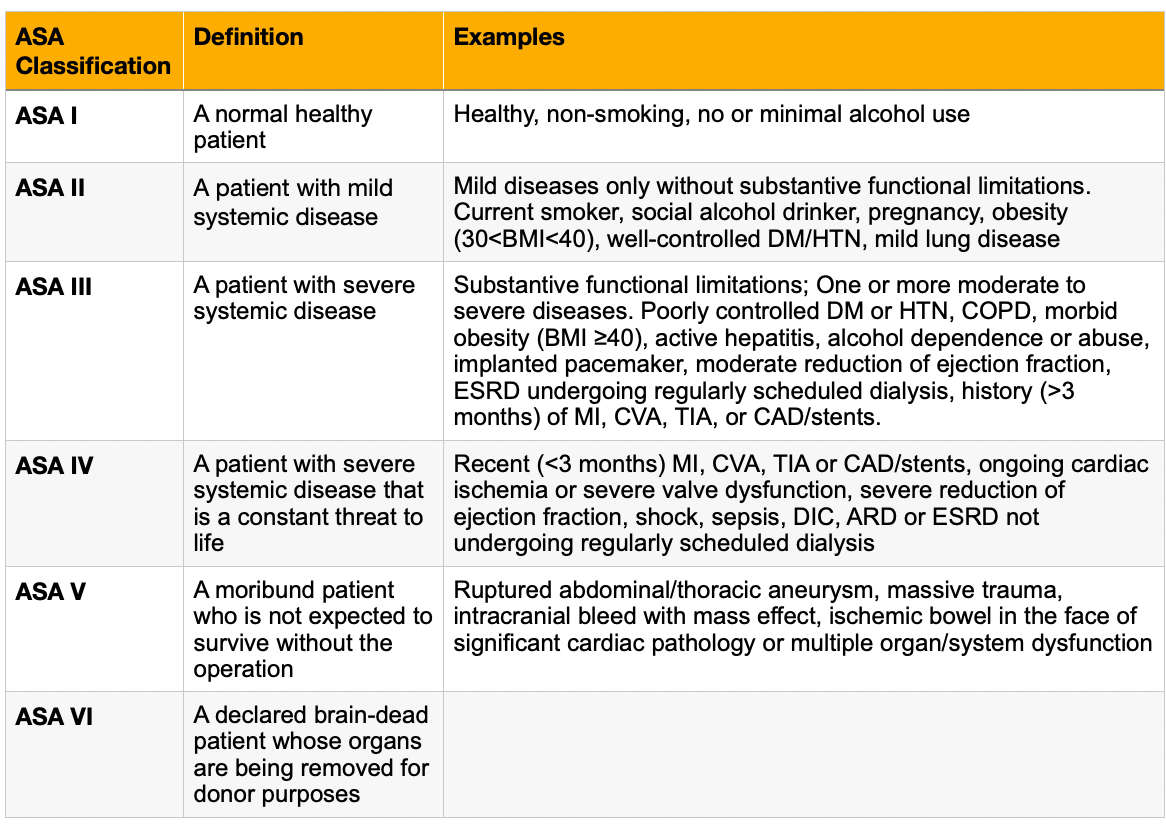
ASA Classification
Contents
ToggleASA Classification
Objectives
By the end of these revision notes, you should:
What is the ASA Classification?
The American Society of Anesthesiologists Classification, or ASA Classification, is a physical status classification that is used to assess and communicate a patient’s pre-anaesthetic co-morbidities. It has been used for over 60 years and helps us gauge potential complications that may be encountered peri-operatively. By predicting these risks, we can mitigate or minimise them.
The ASA classification was last updated in 2014 and is composed of a scoring system running from I to VI. The higher the score, the greater the risk in relation to anaesthesia.
Although the ASA Classification was initially developed for anaesthetic purposes, it is now more broadly used as a method to communicate the health of a patient. In dentistry, the ASA Classification is primarily used for assessing patients prior to sedation and general anaesthetic.
The ASA Classes
The table below breaks down the ASA classification system as set out by the American Society of Anesthesiologists. A patient is scored based on the highest class that they fall in to – they only need one of the co-morbidities to fall in to a class.

Dental implications of the ASA classification

Subscribe to access ALL revision notes and cheat sheets!
We provide a wide range of revision notes and cheat sheets to help you study and prepare for exams! To access all we have to offer, head over and subscribe to ExamineDental now to supercharge your revision!

Examples of the ASA Classification
Example 1


Example 2


Summary


